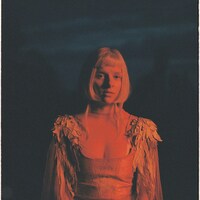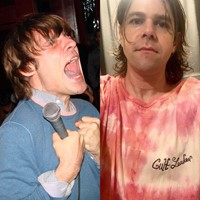Before the Studio Ghibli catalogue comes to Netflix, here’s what you need to know about the musician who’s been dubbed the ‘John Williams of Japan’
Netflix will be adding 21 Studio Ghibli films to their platform from next month, and with the weather getting steadily colder, the timing couldn’t be better. But before you grab a blanket and dive deep into one of the greatest collections of animated cinema in the world, ask yourself: what is it that makes films like My Neighbour Totoro and Howl’s Moving Castle so special?
For all the beautiful animation, heartwarming stories and captivating characters, there is another facet of the Studio Ghibli machine that has been just as consistently spectacular: the music of Joe Hisaishi. He’s the master behind the magical sounds in all but one of Hayao Miyazaki’s animated films (his debut feature, 1979’s The Castle of Cagliostro, which predated Studio Ghibli by six years), and his work is so influential to the overall picture that the studio requests early compositions during pre-production to help to shape the direction and writing.
Try to imagine Spirited Away without the twinkling piano melodies of “One Summer’s Day”, or Princess Mononoke without the swooping strings and swelling brass of “The Legend of Ashitaka”. It’s pieces like these, often drawing on the dynamic, orchestral flow of Impressionist composers like Claude Debussy, that supply some of the lingering emotions that Studio Ghibli is famed for. It’s Hisaishi that conjures up that feeling of being suspended in time, in a peaceful, magical place.
Inform your imminent re-watch of Studio Ghibli’s glorious catalogue by wising up one of the talents that makes that universe so special.
HE’S KNOWN AS THE ‘JOHN WILLIAMS OF JAPAN’
...but he’s also known as the ‘Japanese Quincy Jones’. Joe Hisaishi is actually the stage name of one Mamoru Fujisawa, who decided early on in his career to adopt a moniker that would be more easily recognisable to international audiences. The name ‘Joe Hisaishi’ was inspired by revered African-American producer Quincy Jones, whose name becomes ‘Kuishi’ Jones ,or ‘Hisaishi’ Jones, when translated into Japanese kanji lettering.
In the west, Hisaishi is sometimes referred to as the ‘John Williams of Japan’ due to his long-running partnership with Hayao Miyazaki. Like Steven Spielberg and composer John Williams (who scored the likes of Jaws, Jurassic Park, and the Indiana Jones series), Miyazaki’s bond with Hisaishi remains strong to this day, with their most recent collaboration coming in 2018 for the Studio Ghibli Museum short Boro the Caterpillar.
HE’S NOT THE ONLY COMPOSER TO SCORE STUDIO GHIBLI’S FILMS
While Joe Hisaishi is the main musical associate of Studio Ghibli, he’s only rarely scored films not directed by the studio’s co-founder. Notably, the films of Isao Takahata, which include wartime tragedy Grave of the Fireflies, Only Yesterday, and Pom Poko, were each scored by different people. Hisaishi would eventually score Takahata’s final Studio Ghibli film, 2013’s The Tales of Princess Kaguya, though it was originally commissioned to a different composer. Of the other Studio Ghibli composers, only Yuji Nomi has scored more than one major release – he worked on both 1995’s Whisper of the Heart and 2002’s The Cat Returns.
HE’S HIGHLY DECORATED
Joe Hisaishi’s won the Japanese Academy Award for Best Music a whopping eight times in his career, and his music features in four of the top 11 all-time highest grossing films in Japan. He seemingly has a knack for working on films that go on to snap up top honours at international ceremonies, too. He provided the score for Takeshi Kitano’s violent yakuza drama Fireworks in 1997, which won the Golden Lion at Venice, while Spirited Away famously won Best Animated Feature at the Oscars in 2003. Departures, meanwhile, was the first Japanese film to win Best Foreign Film at the Oscars in 2008. His score was nominated at the Japanese Academy Awards that year, but he lost out to… himself, for his work on the Studio Ghibli film Ponyo.
Outside of film awards, Hisaishi was also awarded the Medal of Honour by the Government of Japan in 2009 for his services to the arts.
HE’S AN ESTABLISHED ELECTRONIC MUSICIAN
Prior to his film-scoring days, Hisaishi made a name for himself as a solo artist. Inspired by popular Japanese electronic artists like Yellow Magic Orchestra in the 1970s, and American avant-garde musicians like Steve Reich, he released his first album, MKWAJU, in 1981. The album utilised minimal synthesisers and percussive arrangements, and featured famed Japanese composer Midori Takada as a performer.
Several of Hisaishi’s earlier Studio Ghibli scores bear similarities with this style of music, most notably Laputa: Castle in the Sky. The film’s entire score was composed largely on synthesisers, but was fleshed out with live orchestration to satisfy studio demands. Tracks like “The Levitation Crystal” present a kind of middle ground between the two styles, fusing minimal electronics with the grand, classical symphonies that we are used to hearing.
HAYAO MIYAZAKI ISN’T THE ONLY DIRECTOR HE’S HAD A LONG-RUNNING PARTNERSHIP WITH
Hisaishi is almost as well-known for his work on the violent crime dramas of Takeshi Kitano, who is internationally recognised for his contributions to cinema as both a director and an actor, but also as a popular comedian and television host (UK readers might know him as the creator and titular ‘Takeshi’ of the game show Takeshi’s Castle). Hisaishi’s partnerships with both Miyazaki and Kitano ran simultaneously in the 90s, and it’s particularly interesting to hear how well Hisaishi’s music works in each scenario, given the dramatic differences between the two genres.
In 2019, the compilation Miyazaki / Kitano / Hisaishi was released, commemorating some of Hisaishi’s best musical contributions to the works of the two directors. Tracks like “Summer”, from Kitano’s Kikujiro, are among Hisaishi’s most recognisable works, while films like Sonatine and A Scene at the Sea are also responsible for some of Hisaishi’s coveted Japanese Academy Award gongs.




